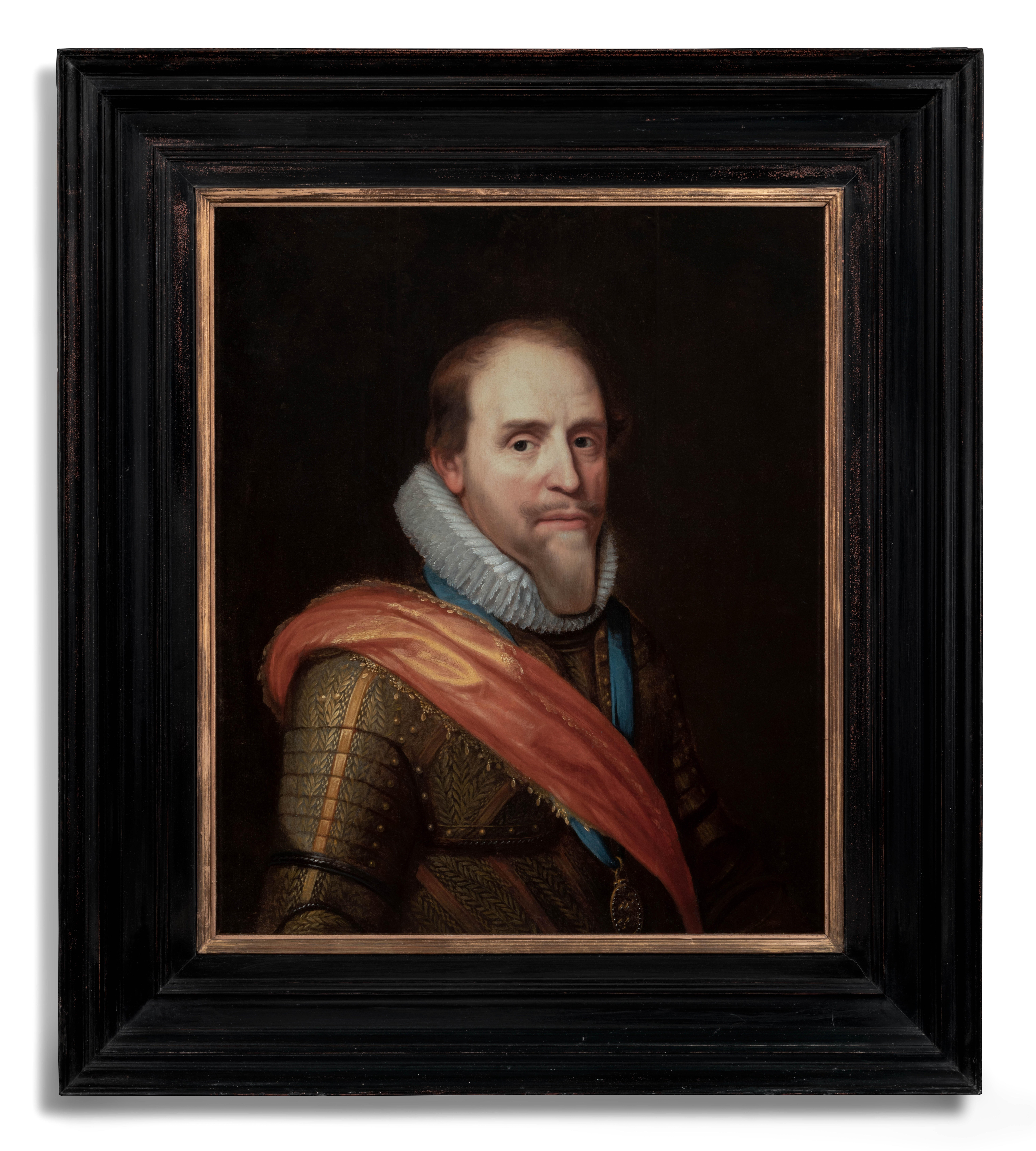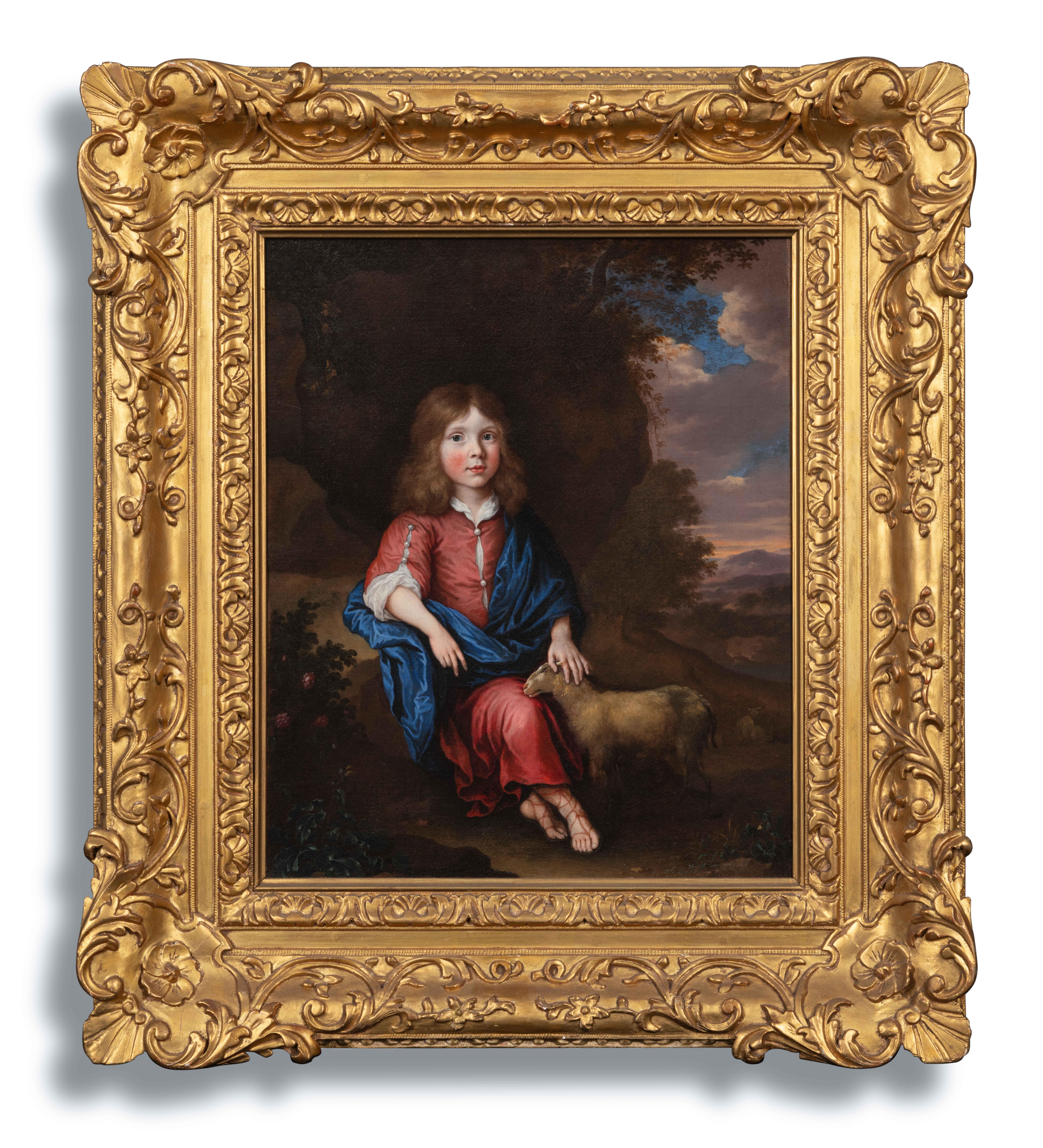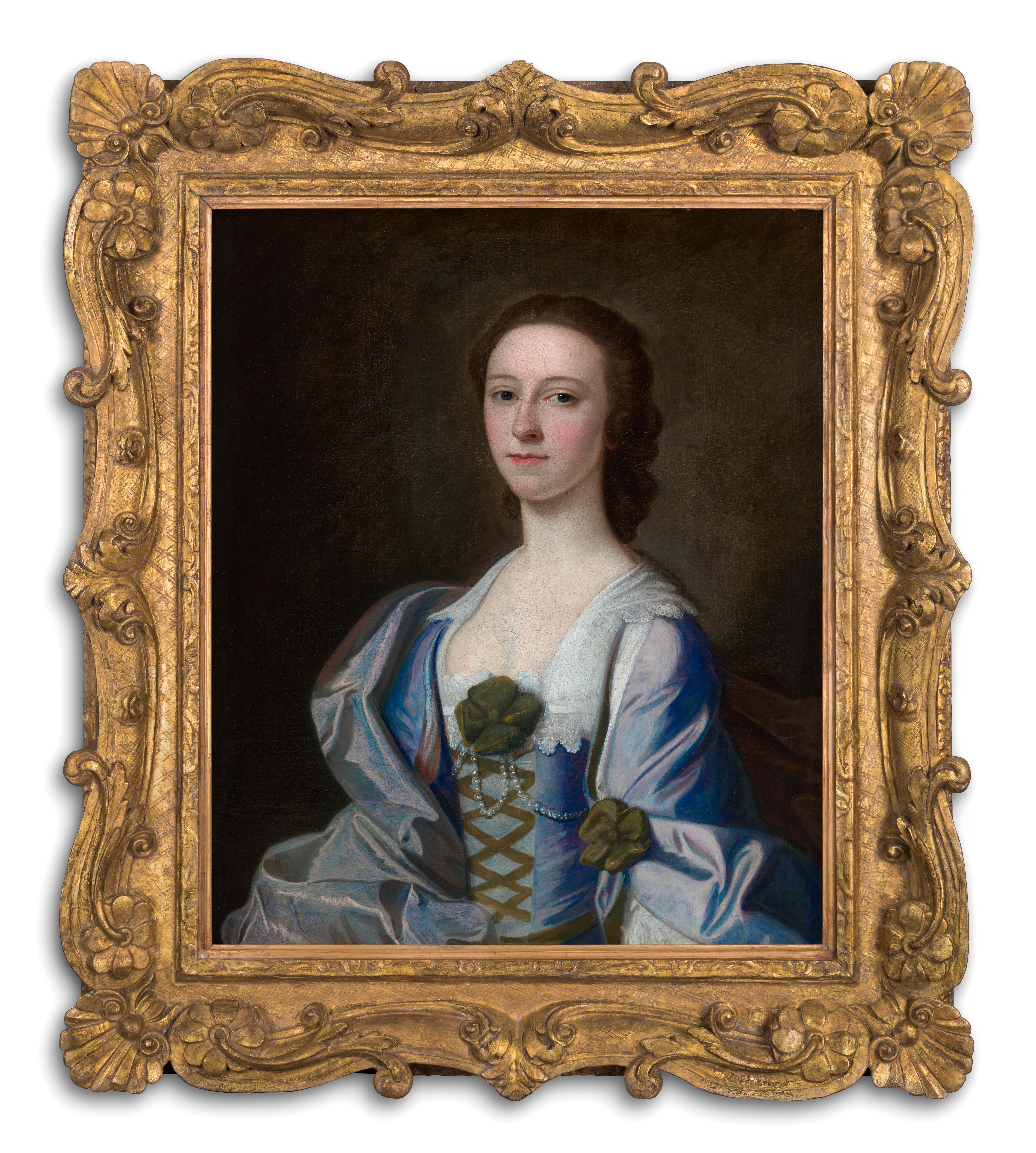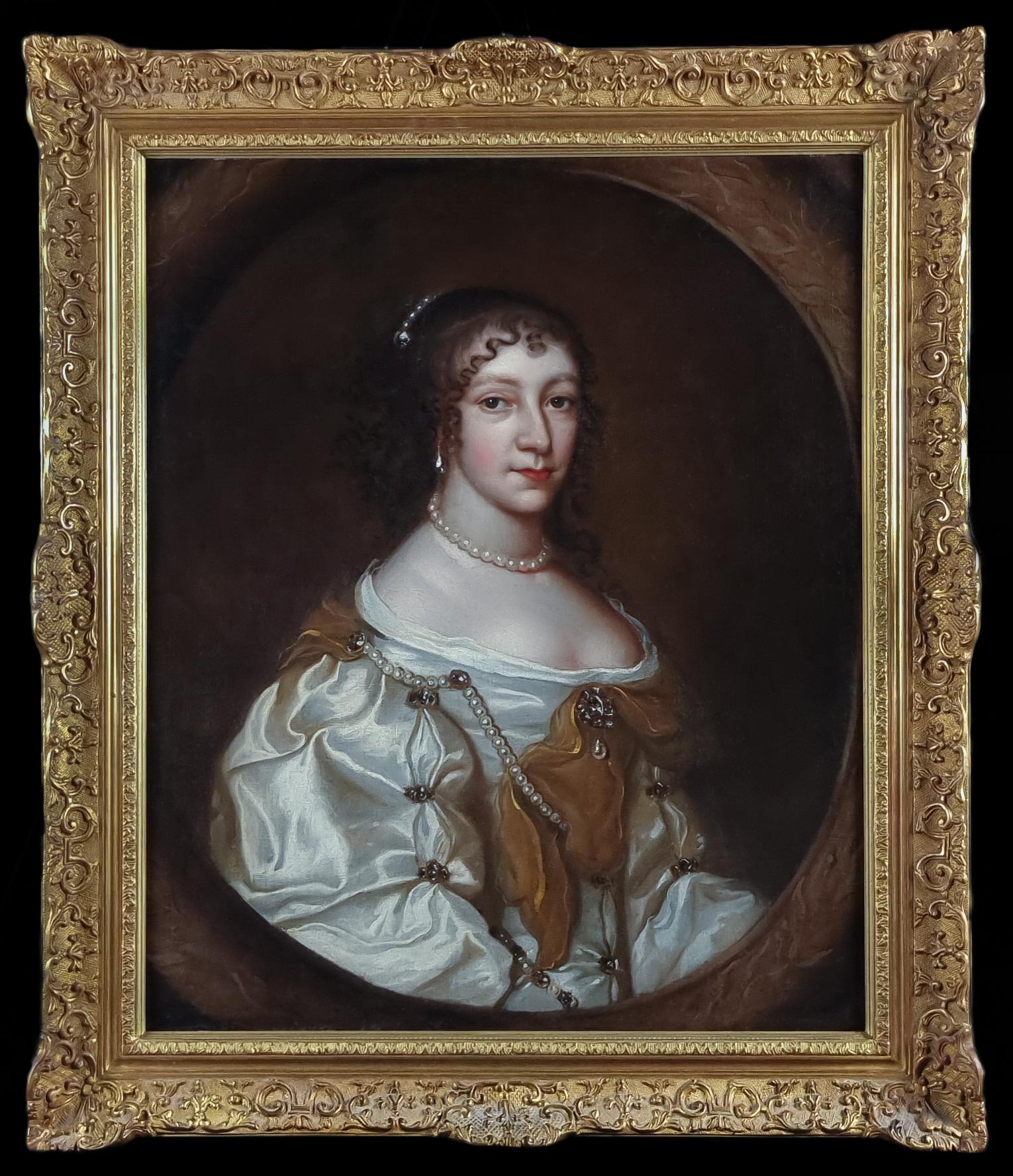Henry PickeringHenry Pickering, Portrait of a Gentleman1759
1759
About the Item
- Creator:Henry Pickering (1720 - 1770, English)
- Creation Year:1759
- Dimensions:Height: 36.75 in (93.35 cm)Width: 31.5 in (80.01 cm)Depth: 2.5 in (6.35 cm)
- Medium:
- Movement & Style:
- Period:
- Condition:
- Gallery Location:London, GB
- Reference Number:
Henry Pickering
Henry Pickering was a pupil of Hamlet Winstanley (1698–1756) and traveled to Italy to finish his art education. He returned to England around 1740 and initially worked in Nottingham, where he made his name painting portraits of notable members of society. His work took him to Yorkshire, Lancashire, Cheshire and North Wales, and by 1760 after spending a brief time in Liverpool, Pickering settled in Manchester. He was a highly successful artist and received many commissions from wealthy patrons. Like Hudson and Reynolds, he employed Van Aken as his drapery painter. Pickering died in Manchester in 1771. Examples of his work are held by the National Museum Wales, National Trust, Nottingham Castle, Museum & Art Gallery, Samuel Johnson Birthplace Museum and Bookshop, University of Cambridge, Walker Art Gallery and the York Castle Museum.
- ShippingRetrieving quote...Ships From: London, United Kingdom
- Return PolicyA return for this item may be initiated within 14 days of delivery.
- Charles Jervas, Portrait of Joseph MellishBy Charles JervasLocated in London, GBCharles Jervas (1675-1739) Portrait of Joseph Mellish (1675-1733) Oil on canvas; held in a carved period frame Dimensions refer to size of frame. Provenance: Blyth Hall, Nottinghamshire, England; by descent to Sir Andrew Buchanan of Hodsock Priory, Nottinghamshire In 1635 John Mellish, a merchant tailor of London, bought the estate of Blyth in Nottinghamshire. His son, a wealthy Oporto merchant, dying unmarried, left Blyth in 1703 to a cousin, Joseph Mellish, who became one of Newcastle’s earliest and most important political supporters in the county. He went up to Clare College, Cambridge in 1692 and on to the Inner Temple the following year. He married Dorothea Gore, daughter of Sir William Gore...Category
Early 18th Century Old Masters Portrait Paintings
MaterialsOil
- 18th century oil portrait of Margaret Peg Woffington by Jeremiah DavisonLocated in London, GBMargaret 'Peg' Woffington, was born in Dublin around 1714. Her charm and beauty as a child attracted much attention quickly resulting in her first stage role at the precocious age of 10. Her first important appearance was as Ophelia in 1737 in Dublin, followed by her greatest role, the male part of Sir Harry Windair in Farquhar's Constant Couple, which in 1740 led to her engagement by John Rich...Category
Mid-18th Century Old Masters Portrait Paintings
MaterialsOil, Canvas
- Follower of Samuel de Wilde, Portrait of an Actor in CharacterLocated in London, GBFollower of Samuel de Wilde c.1841 Portrait of an Actor in character. Oil on canvas; held in a period gilded frame. Dimensions refer to size of ...Category
19th Century Baroque Portrait Paintings
MaterialsCanvas, Oil
- Mather Brown (1761-1831) Portrait of Major-General John Robinson (1757-1819)By Mather BrownLocated in London, GBMather Brown (1761-1831) Portrait of Major-General John Robinson (1757-1819) Oil on canvas; held in a period giltwood frame Provenance: Denston Hall, Suffolk and by descent Literature: Suffolk Portraits, mss by Edmund Farrer, 1921. Vol. 5 (West Supp), entry 230, no.4 – NPG Heinz archive. John Robinson was a third generation professional soldier, whose father was a Lt.-Colonel. He joined the army in 1773 and was Captain by the time he married Rebecca Clive, daughter of “Clive of India” in March 1782. This family connection helped him immeasurably in his political ambitions as a seat in Parliament became available whilst his brother-in-law Edward, Lord Clive was in India. The portrait presented here was completed around 1805 when Robinson was a Major-General. This is confirmed by evidence that surrounds an incomplete portrait by George Romney of his late wife Rebecca. Unfinished at the time of Romney’s death, the painting remained unpaid for and unclaimed. On 25th March 1805, William Saunders, a framer, who had been looking after the work wrote to the artist’s son John Romney...Category
Early 19th Century Romantic Portrait Paintings
MaterialsOil
- Early 18th Century Oil After Francis Wheatley, The Taming of The ShrewLocated in London, GBAfter Francis Wheatley, circa 1800 The Taming of the Shrew Oil on canvas; held in a period style frame. Dimensions refer to size of frame Artists and patrons in the eighteenth ...Category
Early 1800s Old Masters Figurative Paintings
MaterialsOil
- 19th Century Framed Floral Painted PanelLocated in London, GBA late nineteenth century polychrome painted panel, depicting a foliate and ornithological arabesque upon a white ground. Oil on panel, set within an ebonised frame.Category
Late 19th Century Baroque Animal Paintings
MaterialsOil, Board
- Dutch Old Master Portrait of Maurits, Prince of Orange-Nassau, Oil on PanelLocated in London, GBIn 1607, the Delft city council decided to commission a portrait of Stadholder Maurits of Nassau for the town hall, with Michiel van Mierevelt as the chosen artist due to the passing...Category
17th Century Old Masters Portrait Paintings
MaterialsOil, Wood Panel
- Portrait of a Young Gentleman, Pieter Van Der Dvssen; by Jan van HaensbergenBy Jan Van HaensbergenLocated in London, GBPortrait of a Young Gentleman, Pieter Van Der Dvssen c.1664 Jan van Haensbergen (1642–1705) This charming portrait is an excellent example of late 17th century child portraiture and is from one of the most prolific periods in art history – the Dutch Golden Age. A vast number of artists produced work to fulfil the demands and tastes of a broad Dutch society, and many cities in the Netherlands developed into distinct artistic centres, characterised by style and specialities of subject. The quality of our portrait is similar to the works of the highly specialised ‘fijnschilders’, who were working in Leiden at the time; these artists executed meticulous small-scale paintings. As with the artist’s other works of children, Haensbergen painstakingly recorded many details including a fine depiction of the face, and the surface effects of the materials and the pearl clasps. The young sitter is Walther Bernt Pieter Van der Dussen. He was born into a wealthy noble Catholic family in Delft in 1654. In this portrait he would be around ten years of age, dating the work to circa 1664, which is also the year before the artist’s marriage to Johanna van Heusden. The Van der Dussen family were great patrons of the arts and commissioned a number of major works from eminent artists in Delft & Amsterdam. Van der Dussen died in 1716. The wooded setting, the lamb, and the “picturesque” or “Roman” dress...Category
17th Century Old Masters Portrait Paintings
MaterialsCanvas, Oil
- Portrait of Abigail, Countess of Kinnoull, Signed Dated Godfrey Kneller PaintingBy Kneller GodfreyLocated in London, GBPresented by Titan Fine Art, this elegant and beautiful portrait depicts Abigail Hay, Lady Dupplin, Countess of Kinnoull; it is an excellent example of English portraiture from the f...Category
18th Century Old Masters Portrait Paintings
MaterialsCanvas, Oil
- Portrait of a Lady in an Elaborate Ruff & Lace Coif c.1610-20, Dutch Old MasterLocated in London, GBThis magnificent oil on panel portrait, presented by Titan Fine Art, is a splendid example of the sumptuous female portraits that were painted for members of the upper echelons of society during the early part of the 1600’s. The artist has rendered this portrait with meticulous attention to detail and the surface effects of the fine materials. The elaborate lace coif and cuffs are painstakingly delineated, as is the bold black damask, and sumptuous gold decoration of her skirt and stomacher, which is wonderfully preserved and quite remarkable considering the age of the work and the fact that darker pigments are particularly vulnerable to fading and wear. This work with its spectacular depiction of costume is of absolute quality, it can be rated as one of the best works in the artist’s oeuvre and as such it is an important and splendid example of Dutch portraiture. The Dutch Golden Age of painting was a period in Dutch history, roughly spanning the 17th century, in which Dutch trade, science, military, and art were among the most acclaimed in the world. Dutch explorers charted new territory and settled abroad. Trade by the Dutch East-India Company thrived, and war heroes from the naval battles were decorated and became national heroes. During this time, The Dutch Old Masters began to prevail in the art world, creating a depth of realistic portraits of people and life in the area that has hardly been surpassed. The Golden Age painters depicted the scenes that their discerning new middleclass patrons wanted to see. This new wealth from merchant activities and exploration combined with a lack of church patronage, shifted art subjects away from biblical genres. Dress was a key component in portraits, and the exuberant attire reiterates the incredible wealth of this woman. The sitter will have visited the artist’s workshop and inspected examples on display. They would have chosen the size and the sort of composition and on that basis negotiated the price – which would have also been determined by the complexity of the clothing and the jewels that were to be depicted, and by the materials to be used. When all was considered, this portrait would have cost the sitter (or her husband) a substantial sum. The colour black was regarded as humble and devout yet at the same time refined and sophisticated and the most expensive colour of fabric to dye and to maintain. Citizens spent fortunes on beautiful black robes. Such uniformity must also have had a psychological side-effect and contributed to a sense of middle-class cohesion; the collective black of the well-to-do burgess class will have given its members a sense of solidarity. The colour was always an exciting one for artists and when this portrait was painted there were at least fifty shades of it, and as many different fabrics and accoutrements. Artists went to great lengths to depict the subtle nuances of the colour and the fabrics and textures and how they reflected light and it was an ideal background against which gold and crisp white lace could be juxtaposed to dramatic effect. The sitter is either a married women or a widower as is evident by the clothing that she wears and the position, toward her right, it is highly likely that this portrait was once a pendant that hung on the right-hand side of her husband’s portrait as was convention at the time. She wears a vlieger which was a type of sleeveless over-gown or cape worn by well-to-do married women in the late 16th and early 17th centuries. Variations with short sleeves or high shoulder rolls are known. Sometimes sleeves were attached with aiglets, and often slits were made to allow belts or the hands to pass through. Three-piece vlieger costumes of this kind were standard items of clothing in portraits of the women of the civic elite in the period 1600-40 and was a variant of the Spanish ‘ropa’ and served as a trademark of well-to-do married burgher women. Girls and unmarried woman, including beguines, wore a bouwen (a dress with a fitted bodice and a skirt that was closed all round) instead. This clear distinction between apparel for married and unmarried women is clear not only from inventories and trousseau lists, but also from contemporary sources such as the Dutch Spanish dictionary published by Juan Rodrigues in 1634. In it, a bouwen is described as a ‘ropa de donzella’ (over-gown worn by a virgin) and a vlieger as a ‘ropa de casada’ (overgown worn by a married woman). It is striking how few women are depicted wearing a bouwen, unless they are part of a group, family or children’s portrait and it can therefore be assumed that independent portraits of unmarried women were seldom commissioned. It is also believed that the clothing worn in these portraits existed and were faithfully reproduced when cross-referenced with the few exact documents. These sources also demonstrate that clients wanted their clothing to be depicted accurately and with this in mind precious garments and jewels were often left in the painter’s studio. The prominent white lawn molensteenkraag (or millstone ruff) is held up by a wire supportasse and was reserved only for the citizens that could afford this luxurious item that often required 15 meters of linen batiste. The fabulous wealth of this sitter is also evident by the elaborate lace coif and cuffs which have been exquisitely depicted; lace was often literally copied by artists in thin white lines over the completed clothing. The gold bracelet with jewels is a type that was evidently fashionable as it is seen in a number of portraits during the 1610s and 1620. Clothing and jewellery were prized possessions and were often listed in inventories of estates and passed down from generation to generation. There were a great number of jewellers of Flemish origin working at all the courts and cities of Europe, competing with the Italians, and then the French, adapting themselves to the tastes and positions of their patrons and the raw materials available in the country where they worked. The fashion for jewels “in the Flemish style” succeeded that of the Italian style. Cornelis van der Voort, who was probably born in Antwerp around 1576, came to Amsterdam with his parents as a child. His father, a cloth weaver by trade, received his citizenship in 1592. It is not known who taught the young Van der Voort to paint, but it has been suggested that it was either Aert Pietersz or Cornelis Ketel. On 24 October 1598 Van der Voort became betrothed to Truytgen Willemsdr. After his first wife’s death he became betrothed to Cornelia Brouwer of Dordrecht in 1613. In addition to being an artist, Van der Voort was an art collector or dealer, or both. In 1607 he bought paintings from the estate of Gillis van Coninxloo, and after an earlier sale in 1610 a large number of works he owned were auctioned on 7 April 1614. Van der Voort is documented as appraising paintings in 1612, 1620 and 1624. In 1615 and 1619 he was warden of the Guild of St Luke. He was buried in Amsterdam’s Zuiderkerk on 2 November 1624, and on 13 May 1625 paintings in his estate were sold at auction. Van der Voort was one of Amsterdam’s leading portrait painters in the first quarter of the 17th century. Several of his group portraits are known. It is believed that he trained Thomas de Keyser (1596/97-1667) and Nicolaes Eliasz Pickenoy (1588-1650/56). His documented pupils were David Bailly (c. 1584/86-1657), Louis du Pré...Category
17th Century Old Masters Portrait Paintings
MaterialsOil, Wood Panel
- Portrait of a Lady in a Blue & Pink Silk Dress, possibly Mrs Rowe, Signed DatedBy Henry PickeringLocated in London, GBThis charming picture, which has been signed and dated: H. Pickering pinxt 1752 is a type favoured by the highly successful artist Henry Pickering. Pickering’s painting life, from 1...Category
18th Century Old Masters Portrait Paintings
MaterialsOil, Canvas
- Portrait of a Lady in Silver Silk Dress & Pearls c.1660, Oil on canvas paintingLocated in London, GBThis exquisite work is an accomplished example of the type of portrait in vogue in England during the third quarter of the 17th century. There was a large demand for paintings in England and the demand for portraits was greatest. Many artists worked in this lucrative field, even artists who initially trained in the more respected field of history painting, such as Peter Lely, turned their attention to portraiture to meet this demand. Moreover, it was not uncommon for the British, even for men, to present a gift of one’s portrait to a friend - portraits were first and foremost a memento. Woman at court often vied with one another in displays of rich and fashionable clothing. The drapery was either painted from the customer’s own clothes or was perhaps a creation using fabrics loosely tacked together in the studio. This was a common practice of Lely and his studio props included swathes of fabric and pieces of cloth. The sitter’s sumptuous attire and gauze scarf, fastened by a large diamond brooch, is of the finest material and is representative of wealth. Pearls were an obligatory accompaniment since at least the 1630s and they are worn in abundance – in her hair, on her attire, as a necklace, and as pear-shaped earrings called unions d’excellence, reflecting the difficulty of finding perfectly matched pearls of such large size. They could range up to 20 millimetres in diameter. Her hairstyle help date the painting to the early 1660’s. Peter Lely, the son of a Dutch...Category
17th Century Old Masters Portrait Paintings
MaterialsCanvas, Oil






